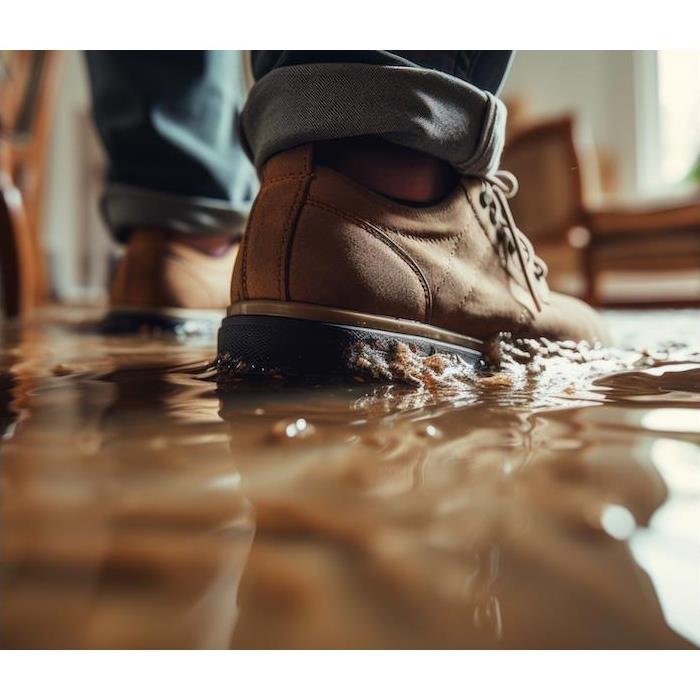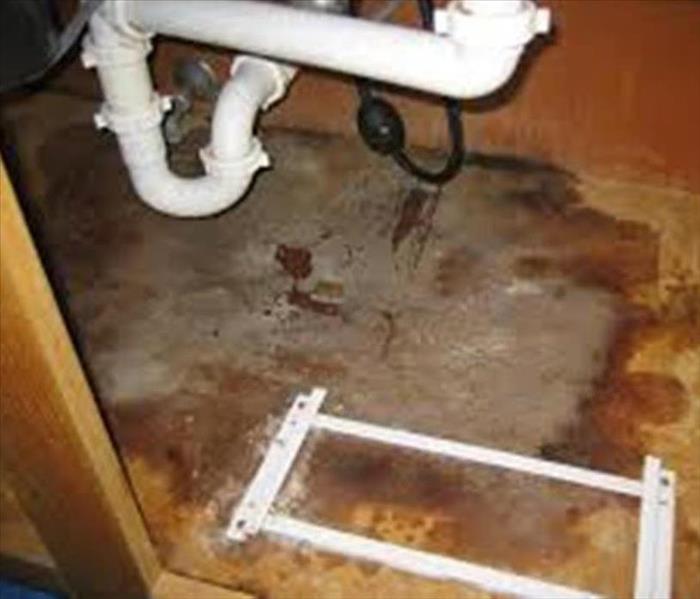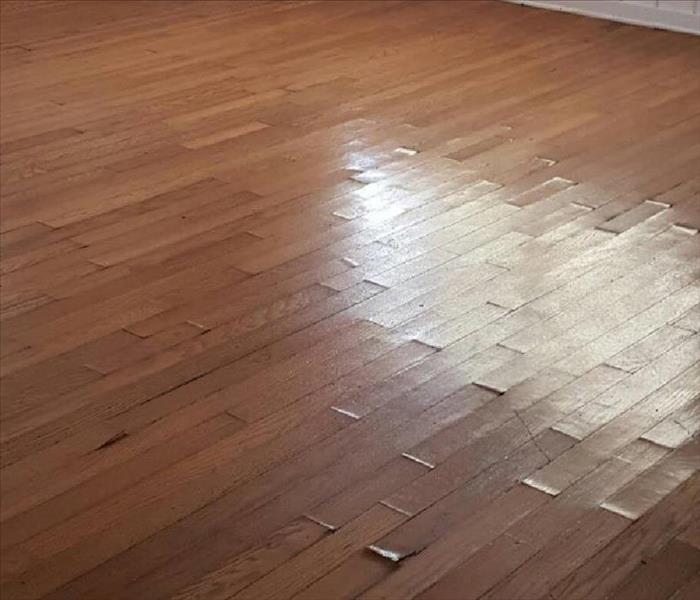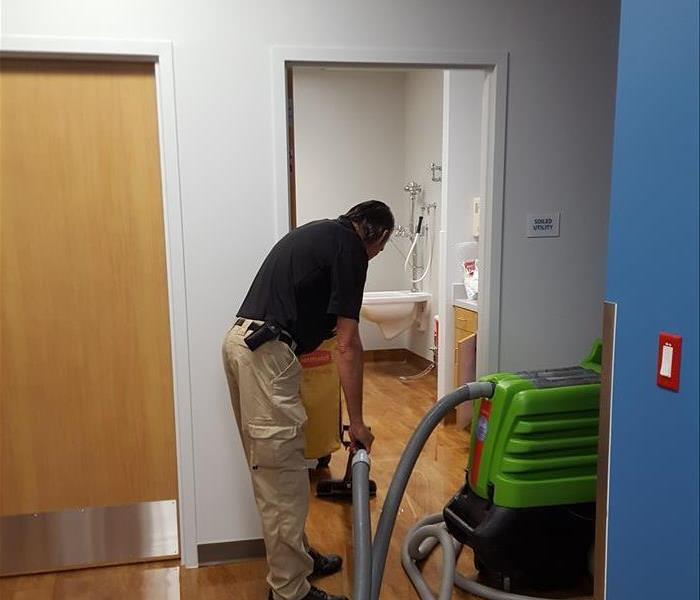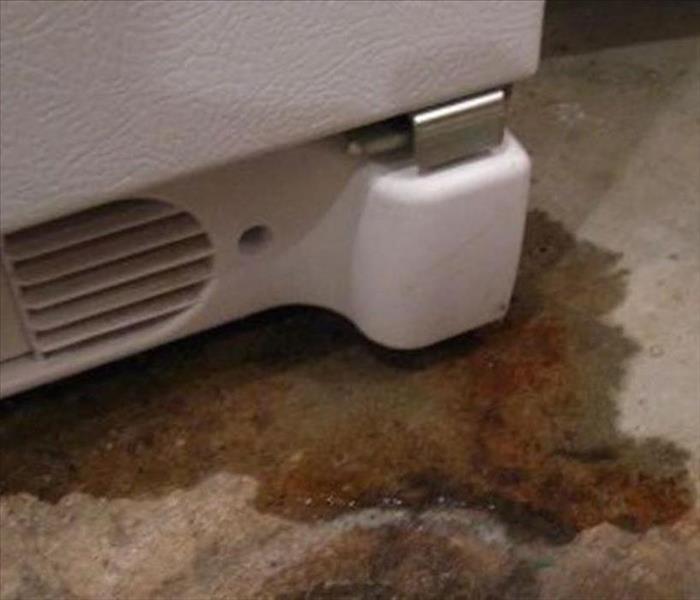Recent Water Damage Posts
Flood Prevention Can Be Basic | SERVPRO® of McAllen
4/1/2024 (Permalink)
When you think about how to do something well, you almost always have to go back to the basics. Teaching your kids how to do math is a prime (no pun intended) example of this—starting with the simple steps is the best way to learn a new skill with as few tears as possible.
Protecting your home from disasters can be simple, too. With some basic home maintenance, you can prepare your home for just about anything Mother Nature can throw at it.
Flooding is one of the top ways that homes across the nation are damaged every year, which makes it one of the natural disasters you want to ensure you are always prepared for.
Know Your Zone
Water damage can happen in a lot of ways, including plenty that don’t originate from outside. While manmade disasters like a leaking appliance can cause a major disruption in your home, they are often easier to control and recover from than something nature sends our way. With so much water around our community, we are all susceptible to coastal flooding, flash floods or just ponding water from our commonly heavy rains.
With such a high flood risk from storm surge during hurricane season, it is important to get to know where your home falls in the flood zone. You need to understand just how much risk you are facing in order to get the best idea of how much preparation you will need to do.
Along with understanding where you fall in the flood zones, you need to get to know your yard. Homes in low-lying areas may be susceptible to flooding with just a light rain. If you fall into this category, adding extra drainage to your yard can be extremely helpful in preventing ponding water that could seep into your home.
If your yard includes leaf-dropping trees, investing in gutter covers can be a great way to keep things flowing. You should also check your roof at least twice a year for any signs of aging or other damage, as well as after high-wind events. Get as familiar with the area your home is in in order to keep it as safe as possible.
Prepare to Prevent
Along with understanding how your home falls within the floodplains, there is some other action you can take around your home to be prepared for anything that comes our way. Take some time to keep your yard prepared so that water constantly moves away.
Your yard should have a gentle slope away from your house. After a rain, check for areas that are staying wet and muddy. You may need to add organic materials or even consider a rain garden in these spots to pull water down through the earth. You can also take your gutter downspouts underground if they are surface level. This will carry water immediately away and lowers the chances of damage to your gutter system during high winds.
To add a little extra protection inside your home, put checking window and door seals on your seasonal to-do list. Add caulking to any areas that are showing signs of aging, and add weather stripping to keep things tightly sealed against the elements. If you have hurricane shutters, close them long before the first storm can blow in to make sure they are in good shape.
If you have a basement, keep a close eye on corners and edges in order to catch cracks or loose seals. Make sure you have a sump pump in good working condition so water can be pumped out when coastal flooding starts moving inland.
When it comes to getting prepared for potential flood disasters, keep it simple. Add basic yard and home maintenance to your regular to-do list in order to ensure everything is in good shape. Protecting your home will be far easier than helping your kids finish their math homework.
Do you have water damage in your home? Contact us at SERVPRO® for fast recovery.
Flood Prevention Inside the Home and Out
11/2/2022 (Permalink)
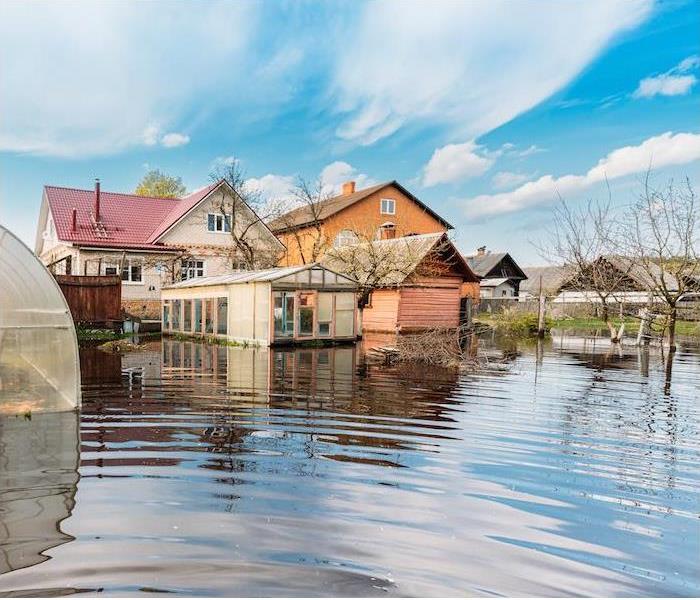 Flood Prevention Inside the Home and Out | SERVPRO® of McAllen
Flood Prevention Inside the Home and Out | SERVPRO® of McAllen
Protecting your home from flooding is important for everyone, all around the nation. Just an inch of water can mean substantial damage and can cost you a huge amount of money for repairs.
If your neighborhood isn’t one at risk for frequent floods, you may not qualify for financial assistance with your insurance or with federal sources. Therefore, any preventative measures you can take are essential.
We have seen year after year the challenges that flooding poses being so close to the Gulf. Our corner of Texas has experienced river flooding, coastal flooding and storm surges that have taken out entire neighborhoods. Take the time to check on your home’s risk factors and learn as much as you can about the risks our region faces.
Protecting Your Home From the OutsideSometimes flooding can’t be predicted, and an unexpected rain will leave yards and gutters drenched. Get your home ready from the outside in and lower the risk of damages to save on repairs.
Clean out your gutters to keep them clear of debris, sticks and leaves so water can flow away from your property. Extended downspouts are also an effective and inexpensive addition that will keep water moving in the right direction.
Organic materials like mulch can aid in protection when added near your home in a downward slope. Water will roll away from your foundation, and puddles will be avoided.
Landscaping can also be a great preventive tool and ensure that water doesn’t gather and enter into your home. Gardens are highly absorbent when heavy rains roll through. Water is pulled down into soil and roots rather than soaking your lawn and creating puddles.
There are a few upgrades to your home you could invest in for protection in all kinds of weather. Newer homes on the Island or near the coastline may already include raised electric and anchored fuel tanks, but if you are in an older home or farther away from water, adding these can offer protection when flooding occurs.
While these can cost a bit, something as simple as adding a rain barrel that collects water directly from your gutters is a cost effective way to keep water from ponding or puddling. It is also a great way to water the plants you added to your yard!
Flood Protection From the InsideA firm foundation and well-sealed basement are the best forms of protection for your home when it comes to external sources of flooding.
If your foundation is cracked, seal it. Install a sump pump in your basement or bottom floor that will pump any water out that comes in, and if your area is high-risk, spring for a battery-operated pump that will continue working even when the power goes out.
When a flood doesn’t come from outside, you can protect your house with easy home maintenance.
Pipes are one of the most common sources of water disasters in the home. Take care of pipes that have aged and be sure to stop leaks in order to prevent failures. Include checking your plumbing as a normal part of your house-cleaning routine in order to catch issues early.
Adding a sensor that detects leaks can also be a way to mitigate damages from water. Some security systems offer this add-on, so if you have been considering updating or adding a new system to your home, go for the upgrade. It will offer you a lot of peace of mind knowing that if water is flowing when it shouldn’t be, you can stop it fast.
Any kind of floodwater will damage paper goods and photographs right away when it takes over your home. Keep items that cannot be replaced stored up high or in a waterproof container. Your emergency contacts should also be stored somewhere safe—and should include SERVPRO. We have 24⁄7 availability and the experience to get your recovery started fast.
Experienced water damage in your home? Call SERVPRO today to get your restoration completed faster.
5 DIY Water Damage Restoration Tips for Your Home
8/4/2022 (Permalink)
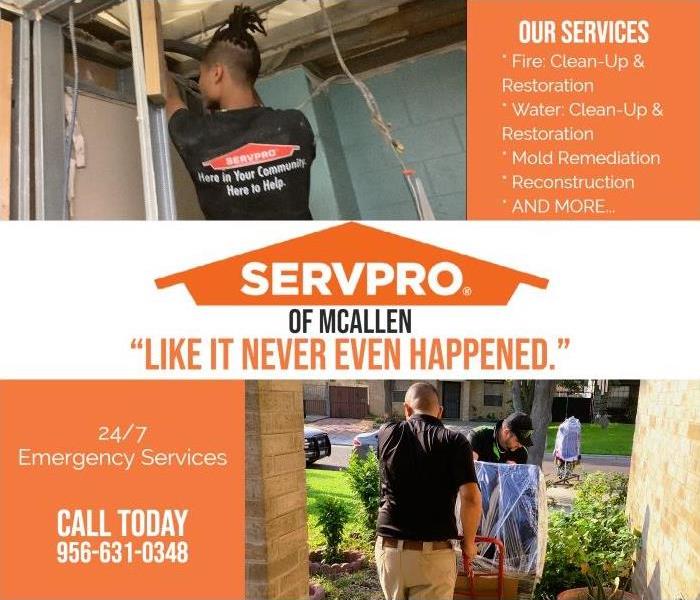 Offering 24/7 Water: Clean-Up & Restoration Services!
Offering 24/7 Water: Clean-Up & Restoration Services!
Not all water is clean and when suffering from water damage you may want to first analyze if your water is clear or gray/black. In the scenario that you could have gray or dark water, you may want to reach out for professional help before trying to do anything yourself.
Suffering from unexpected water damage in your home can be devastating! At SERVPRO of McAllen, we understand how the need to have your home back “Like it never even happened.” This is why we offer 24/7 emergency services to be able to help out no matter what day or time it is! (Including holidays)
Follow these DIY tips for when you have minor clear water damage within your home:
1. Disconnect Outlets
- While you may not see the severity of the water damage just yet, it’s important to be cautious around appliances and gas lines. Using this equipment despite the situation could cause electrical shocks or even explosions.
- Inspect Mold
- Most of the time, mold can spread quickly once it infests an area, so it is in your best interest to inspect for growth. For small issues, you can cut out the affected area, bag it, and dispose of it immediately. However, with serious mold infestations, you may want to reach out for professional help, in which case SERVPRO of McAllen offers 24/7 Mold Remediation Services.
- Dry Water Out
- Before more damage occurs, you need to eliminate all moisture and dry out the affected areas. You can use fans or a large-capacity dehumidifier to circulate air and dry out the carpet, wood, and other surrounding materials. While this won’t prevent mold growth altogether, properly drying out the area will help lessen the damage. If you do not have the proper equipment to do, so call your local SERVPRO, and schedule your first inspection.
- Remove Damaged Materials
- If your remove any damaged material, like insulation or carpet, soaked with water, you need to dispose of them immediately to avoid mildew. It is important to focus on the ceiling and floors first. This means unsealed cement, drywall, and wood need to be addressed and replaced so the home’s structure can support water damage repair. Remember at SERVPRO we offer Reconstruction Services, as well 24/7.
- Disinfect Remaining Areas
- Depending on the type of water you are dealing with, it can contain a lot of bacteria and other hazards that can cause health effects. The water could also encourage the growth of mold, so it is important to sanitize immediately. Once the damaged materials have been removed, you will want to disinfect the entire area before you begin the restoration process. Spray and wipe down the surfaces with bleach so the mold spores don’t grow before you continue with the repairs. The great part of this also is that if you feel you don’t have the time or materials for proper sanitation, we also offer SERVPRO Disinfection Services.
If you feel your case is severe or you simply want a group of professionals to take care of the water damage itself, you may reach out to us 24/7 at 956-631-0348. CALL NOW, and speak to one of the certified water administrators that are more than happy to schedule your first inspection with us! We take honor in our slogan and can provide a restoration, “Like it never even happened.”
3 Categories 1 Company
11/5/2021 (Permalink)
Oh, no! Not another leak, but where is it even coming from !? And who do you call at 10:30 pm on a Sunday??
Here’s what you’re going to do, call the professionals SERVPRO of McAllen!!!
You must understand that as the #1 preferred company for most insurance companies and local businesses and as a personal preferred go to restoration and mitigation company we KNOW what we’re doing and we do it the BEST!! With 24/7 services available you can expect a fast response and a team out there to you quickly!
Now we don’t want you to feel like there’s nothing you can do. Knowing what kind of categories of water damages there are can you a better understanding of what you are dealing with.
There are 3 different types of water categories, let’s break them down:
Category 1: Clean water
> this is an example of floodwater that does NOT post an immediate health threat, aka clean water. Clean water can result from malfunctioning appliances or melting snow and rainwater. These damages are easy to clean up normally by one self. Note: if this clean up isn’t done within 48 it will turn to our, next, category 2: greywater
Category 2: Greywater
> aka as a sullage. It is referred as wastewater that is NOT contaminated with fecal matter. Household waste water comes from bathtubs and showers, washing machines, dishwashers, and sinks. This kinda water normally contains fewer pathogens than blackwater and can be recycled, like to flush toilets. Note: if this isn’t treated within 48 hours it will turn into category 3: black water.
Category 3: Blackwater
> now THIS is going to be your contaminated water with human waste and other pathogens and toxins. Black water is commonly known coming from broken sewage pipes and contains human waste such as urine and fecal matter as well as even toilet paper. Raw sewage is classified as black water and is known for carrying bacteria and contaminated with dissolved chemicals and particulates, making contact even more dangerous.
If after going over these different categories you suspect your home might be a victim of black or greywater, call the 24/7 cleanup and restoration company you can rely on.
Call SERVPRO of McAllen!!
Safety Tips
11/5/2021 (Permalink)
When your home or business have been flooded, you may want to call a water damage clean up contractors to save your house from heavy damage.
Before SERVPRO of McAllen arrives to the home to begin mitigation, these are some safety precautions you may follow:
1. Be aware of insects
in flood water, many dangerous animals may have washed in from outside with the water. Keep children and animals away from any gray or black water
2. Stayaway from electrical wires
Turn off all ceiling fans if the ceilings are wet.
3. Keep away from damaged walls and floors
in the event that the flood in your home was severe, if stepped on or with time they may cave in. try to stay away from these areas until a professional gets there for inspection.
4.Protect important documentation
Any important documentation that you want to want to preserve, keep them in a ziplock bag!
When you find yourself in a situation where the water damage is too severe count SERVPRO of McAllen into cleanup and restoration of your home.
How it works at SERVPRO of McAllen
11/1/2021 (Permalink)
 We are part of a NATIONAL NETWORK of over 1,700 Franchises.
We are part of a NATIONAL NETWORK of over 1,700 Franchises.
Water damages, don’t knock at the door and let us know that they will be arriving at 3 am causing you to not only miss work but spend money. As much as a little “heads up” sounds great, it just doesn’t work like that.
When disaster hits, it hits. Whether it was caused by mother nature or just a pipe burst that lead to an unwanted indoor pool of water.
Regardless of the scenario, what do you do when that happens?
First things first, don’t panic. CALL SERVPRO. As a 24/7 emergency water restoration company, it doesn’t matter what day of the week time it is, as soon as we receive your call the process begins.
Following that, we begin the paperwork and insurance calls to get the ball rolling.
The fun part begins when we get started on providing you the best services, “Like it never even happened.”
Have water or flood damage?
CALL US NOW 24/7 emergency services available, not a holiday nor weekend can stop us from getting to you.
Disaster Happens. We Can Fix It.
10/18/2021 (Permalink)
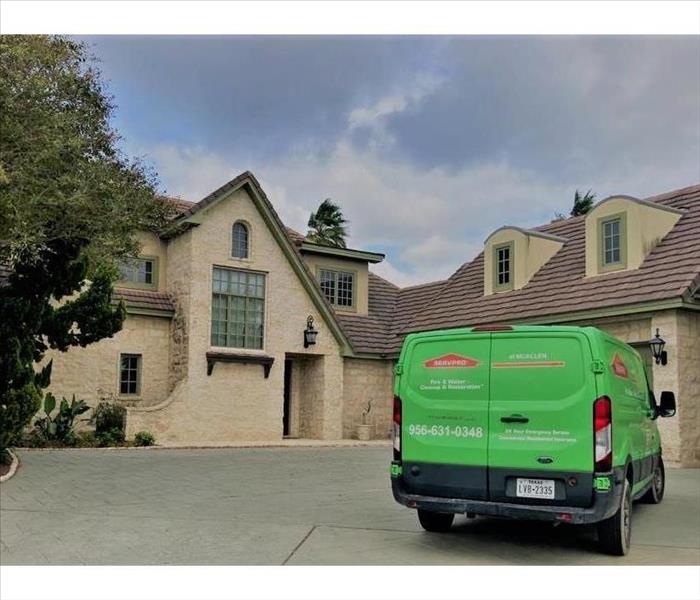 If you have any questions on our available 24/7 emergency services call 956-631-0348
If you have any questions on our available 24/7 emergency services call 956-631-0348
It's Saturday, 3 am. You’re starring at the ceiling, but all you can really think of is the trickling droplets of water as they form a pool of water at the end of your bed. You’re also thinking about how everyone and everything is closed because it’s a weekend.
Don’t wait for regular business hours, SERVPRO of McAllen offers 24/7 emergency services!! Our highly skilled and trained technicians have the ability to tackle any job no matter the size of the damages! We handle it all from insurance claims to the arrival of the crews to the very end when the job is done, we stand by your side 100% of the time.
The best part of our job is when we provide our clients an experience, “Like it never even happened.” Water damages don’t keep track of a calendar and come at the most unexpected times but we understand that and are always ready for anything that mother nature throws at us.
The 411!
8/31/2021 (Permalink)
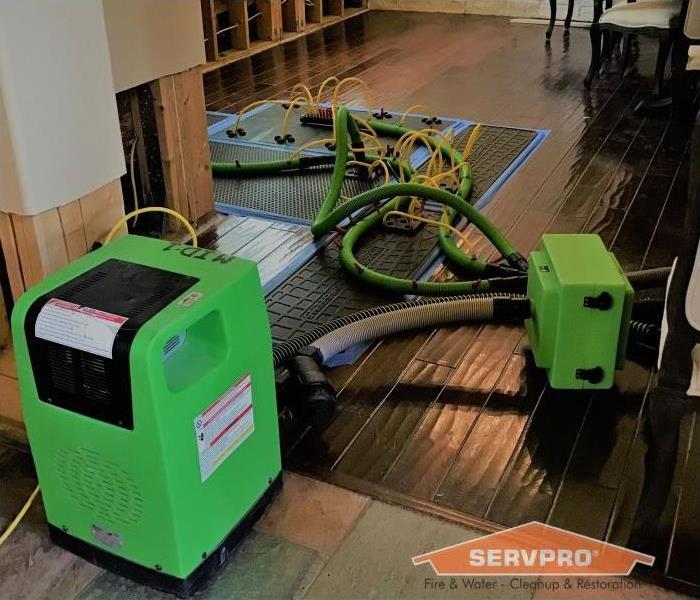 Emergency Services Available 24/7!
Emergency Services Available 24/7!
Would you be shocked, to learn today, that flood damage is not considered a form of water damage? “What?” “How?” or “Why?” are probably all the questions going through your head right now. You’re not alone though.
Homeowners/business owners sometimes don’t know or realize that water damage and flood damage are 2 different kinds of coverages. It’s important to know that if you own a home but do not have flood insurance, you will not be compensated by your insurance company for flood damage.
We’re going to break down some components for you here and explain some causes and key items your insurance WONT cover in the event of either flood or water damage.
Water Damage:
Potentially covered by homeowner’s insurance. Affects only your home.
- Common causes:
- appliances, busted/frozen/leaking pipes, bathtub/toilet overflow
- Key items not covered:
- Repair of the source of the leak (i.e. washing machine)
- Flood damage
Flood Damage:
Potentially covered by flood insurance. Rising water OUTSIDE the home as well. You and your neighbors where effected (2 or more properties)
- Common causes:
- Body of water overflow
- Heavy constant rain
- Key items not covered:
- Outside Property (trees, fences)
- Vehicles
Get in contact with your insurance to get a personal breakdown, if you’re facing water damages. They can determine if for your scenario, you’d be covered.
Your floor’s forever companion is in need!
8/5/2021 (Permalink)
 Feel safe, knowing our equipment is TOP of the line to provide the BEST service for YOU!
Feel safe, knowing our equipment is TOP of the line to provide the BEST service for YOU!
Having your home carpeted is probably one of the best feelings ever! Dealing with damages to it is a different story. The idea of a moist carpet is just awful, and if let alone could lead to mold growth. With that being said if you see the interior of your carpeted home suffer any water damages, it is crucial you seek professional water damage restoration services. (LIKE US!!)
Although not all water damages are severe to where you require outside services. For example, if you spill something small, like a glass of water, or have wet foot prints within the home; here’s a couple of steps you may want to follow:
- Extract the water: this will vary on the amount of water needed to be removed from the carpet. If excess, you may need to use a shop vac.
- Follow-up with an absorbent towel: after removing the excess water, press down with absorbent towels on the carpet. (If at this point you are struggling to remove the excess water it's time to consider calling water damage professionals.)
- Air dry the carpet: placing fans and dehumidifiers will help circulate the air and assist with the evaporation. (Check back on this process hourly) (if minimal water a hair drier can be used)
NOTE: in the event of a flood, it may be near impossible to salvage both the carpet and the padding underneath it. In these cases, the removal and replacing of both the carpet and padding is recommended.
- Replace the carpet padding: assure that when drying your carpet, not just the top fibers are dry. The carpet padding needs to be dried completely or it could lead to mold damage which will speak quickly.
Know that when you contact SERVPRO of East Mission and South Edinburg you are hiring a group professional. Our employees are trained and educated to be able to identify when and if your carpet can be salvaged. They are trained to know what process is necessary to restore everything back to look, “Like it never even happened.” Call us, at 956-585-3433, if you have any severe water damages within your home and your interior belongings are where there are damages.
Why Did My Pipes Burst In My RGV Home?
11/6/2020 (Permalink)
Several seasons can be experienced in a day. From chilly mornings with lows in the forties to afternoons reaching into the seventies; the temperature range can be quite large. While that may become a hassle and knowing how to dress for the day it also may become a headache if your pipes burst. The wide temperature swings can cause water in your home and businesses’ pipes to freeze causing damage to your walls, basement, or attic.
To prevent your pipes from freezing during the colder months of the year SERVPRO of McAllen has a few tips . . .
- Leave a faucet running when temperatures get below freezing.
- Keep your doors, windows, and garage shut when you aren’t leaving or entering the house.
- Seal cracks or any other sort of openings that will allow cold air to seep in.
Pipes bursting may also lead to other unattended consequences impacting the structural integrity of your home or business’s foundation. Mold growth may also be possible if the water coming out of the pipe is left unattended for a substantial amount of time. Be sure to give our SERVPRO of McAllen team a call if you experience any sort of water damage.
If your home or business is in need of our services whether for fire, water, or mold damage; perhaps even deep cleaning services, call the experts today – SERVPRO of McAllen, 956-631-0348.
Is Water Coming Out of My A.C Unit?
11/6/2020 (Permalink)
Blasting the AC feels like a great idea on a hot summer day in the RGV. But after lowering the thermostat the temperature of your home continues to rise. Running upstairs to the attic you find watermarks staining the walls caused by condensation and a pool of water around the HVAC system. Come to find out water has been leaking from your unit.
An overflowed drain pan, clogged drain lines, and a dirty evaporator coil are all potential reasons your air conditioning unit is leaking. Maintaining an AC unit and assuring it’s performing correctly is a homeowner’s responsibility. Checking in on your unit regularly is an important preventative measure as the cost to repair may need to come out of your pocket and not your home insurance company. A leaky AC unit located in your attic may also deplete the integrity of your roof adding to the cost overall, reinforcing the importance of upkeep.
Responding promptly to the water damage that has occurred includes hiring a professional water restoration crew. Waiting may increase the severity of the damage to your attic and the investment needed in order to remediate once production begins. Our team is experienced in both mitigating the water damage to your attic and effectively remediating the area impacted. We’ve also earned several certifications in water cleanup through the IICRC.
Pandemic Pipe Problems
11/4/2020 (Permalink)
COVID-19 has hit the RGV and, in many ways, changed the way we live. However, that does not mean that life or problems just stop. Even though you may be at home more, real life problems still happen! Water heaters can leak, as well as A/C units and water pipes.
If you have any issue, SERVPRO of McAllen wants you to know that we are still open, working, and taking on new jobs. Our highly trained and experienced staff is here to help you with whatever issues may arise. We are a locally owned company that seeks to put the communities we serve first, especially during this unfamiliar time. We are all in this together, and we want you to know that we are Here to Help.
Please do not hesitate to call SERVPRO of McAllen at 956-631-0348
Your Laundry Room is for Washing Clothes and... Water Damage?
10/30/2020 (Permalink)
RGV homeowners are well aware of the expenses that can be incurred by water damage in their homes, but they may be surprised to know that the average cost of a home water damage claim is 6,965. Many residents do not typically have thousands to spend on home repairs after a disaster, which can add to the stress of the claims filing process. However, there is a team that can aid in lowering damage though emergency-response cleanup.
If your Mission/Edinburg home has suffered water damage to a pipe leak or appliance failure in your laundry room, SERVPRO technicians are one phone call away from providing a comprehensive cleanup service that restores your home. It only takes 24 to 48 hours before water damage creates an environment that allows mold, bacteria, and odors to thrive. Fast Action is necessary to eliminate the risk these contaminants can bring into your home.
Learning The Many Types Of Water
7/31/2020 (Permalink)
When your home or business suffers a water damage, understanding what type of water you are dealing with is critical to ensuring proper cleanup.
There are three types of water. Clean water is water from a broken pipe, or other water source; rainwater is also considered clean. The term gray water is used to classify slightly contaminated water. Clean water becomes gray water when it is left untreated allowing bacteria and other contaminants to begin growing, making the water hazardous. Black water is highly contaminated and filled with fungi, bacteria, chemicals and more. Black water is typically caused by sewage damage, flooding or any type of natural disaster. Black water should always be handled by trained professionals.
Consider taking the following precautions to help minimize damage or prevent further damage while waiting for help to arrive.
Damage from Clean Water
- Shut off the water source if possible or contact a qualified professional to do so.
- Turn off circuit breakers for wet areas of the building if access to the power distribution panel is safe from potential electrical shock. Do not enter rooms with standing water, as electrical shock hazards may exist.
- Remove as much excess water as possible by mopping and blotting. Wipe excess water from wood furniture after removing lamps and tabletop items.
- Remove and prop up wet upholstery cushions to allow more even drying.
- Move any paintings, are objects, computers, documents and other valuable items that may be sensitive to moisture to a safe place.
- Do not leave books, newspapers, magazines or other colored items on wet carpets or floors as they may cause staining.
- Do not use your household vacuum cleaner to remove water as there is potential for electrical shock or causing damage to the vacuum cleaner.
- Do not turn on ceiling fixtures if ceiling is wet; do not enter rooms where ceilings are sagging from retained water.
Damage from Contaminated Water
- Avoid all contact with sewage and items contaminated by sewage. Wash your hands thoroughly if you come in contact with contaminated items.
- Do not walk through contaminated areas, as you could spread damage to unaffected areas.
- Do not turn on the HVAC system if there is a possibility of spreading contaminated air.
- Do not use household fans to dry the structure, air flow could spread contaminants.
- Discard any food and/or products for personal hygiene and cleanliness if exposed to the contaminated areas. SERVPRO’s network of more than 1,700 Franchises is ready to help in the event a fire, water, or mold loss occurs
- Call on a restoration system serving insurance companies and their insureds, as well as thousands of commercial property owners in North America. Don’t leave your property to chance.
Causes Of Drain Issues Stated From Plumbers
7/31/2020 (Permalink)
As a homeowner you should never underestimate the seriousness of drainage issues. Plumbers have weighed in and have given their expert opinion on what causes these issues and some tips on how to avoid them. Here are the four things to look for.
- Recurring Clogs- If a clog returns, chances are that there is a deeper clog.
- Multiple Clogged drains-If you have several clogged drains, you may have a clog in your main drain.
- Foul odor-Persistent sewer odors coming from your drain or drains can be a major sign of a drainage issue.
- Flooding-One of the worst problems associated with clog drains is sewage backup. Getting a professional on the site as soon as you can will help you avoid a big problem.
Routine maintenance is key to keeping those drains open. Use drain catchers or less toilet paper. Also make sure that you run plenty of water into the garbage disposal after use. Just those few things help a lot. If you ever do have water damage, call SERVPRO of McAllen with your water needs. We will be there to clean up the mess those clogged drains made.
Who's Responsible for Water Damage: Tenants or Landlords?
9/23/2019 (Permalink)
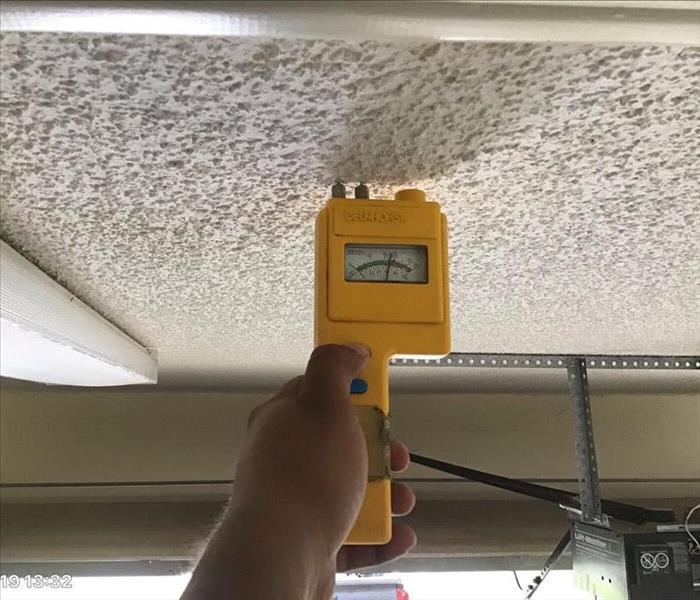 When your ceilings or walls are affected by water damage, our techs use a penetrating meter.
When your ceilings or walls are affected by water damage, our techs use a penetrating meter.
Repairing extensive water damage can cost a fortune. That’s why it’s critical to know when exactly the landlords or tenants are financially responsible for restoration activities. While there are state-specific differences, you’ll find all the main guidelines in this article. SERVPRO of McAllen goes over the main facts regarding water damage responsibilities in order for you to make the right decisions as soon as possible.
What are the tell-tale signs of water damage?
When water damage is mentioned, most people imagine river-like streams flooding the rooms and soaking every inch of your belongings lying on the floor. But that’s just one way to imagine water damaging the rental property.
1. Brown spots
In reality, many cases of water damage start as a subtle process. You may notice brown spots and discolored blotches appearing on the walls or ceilings. The surfactant used to bind the paint is usually brown and the intruding water separates the brown liquid from the surfaces. This is the reason behind the brown marks.
2. Different surface textures
You may also start noticing changes in the surface textures of your home. If you notice bends, bubbles, and cracks, these are all indications of an underlying disturbance that’s often caused by excess water.
3. Strange smells
Even strange smells alone may give off a warning signal that should be interpreted as a water emergency. When there’s too much moisture in the air or inside porous materials, then mold growth is a real possibility. If you notice any of these signs, act on the first signs and contact your landlord immediately. You can work together to find out the underlying causes. Not notifying your landlord after the first signs have clearly appeared could be interpreted as negligence. This situation could turn more expensive in the long run.
Landlord’s Responsibility
As a universal principle, landlords need to provide a rental space that’s safe for habitation. Lack of maintenance creates issues, making the landlord responsible for the outcome of improper care. For example, when the pipes burst because they hadn’t been changed for a long time, then the tenant isn’t clearly at fault. The landlord should have organized the plumbing works and repairs. The same goes for neglected roof problems. Upon being notified of the first issues, the landlord should have decided to get the roof fixed. That is the landlord’s responsibility.
But you should also not forget that there are situations that minimize or entirely remove the landlord’s responsibility. When the tenant has done something wrong, neglected the property, or failed to notify the landlord of the first problems, then the landlord is not responsible for paying for the repairs.
Note that not all cases are clear-cut, which means that sometimes big disagreements need a middleman to decide who’s exactly in the fault.
Grey areas of responsibility
Yes, landlords do need to keep their properties safe and fit for habitation. Once the water problem unfolds, the tenants still need to do everything they can in order to restrict the extent of the damage. For example, let’s say that your roof starts leaking during the rainstorm, and the water gushes into the house. The landlord is surely responsible for the fact that the roof wasn’t properly maintained. But your responsibility is to remove all of your personal belongings out of the water’s way.
Also, you should take every step to minimize the water from making serious damage to the property. Even taking these practical steps inside the home isn’t enough. You need to call your landlord immediately. Not having an active attitude could seriously harm your chances of getting fully reimbursed for the damage to your personal things.
Tenant responsibilities
Yes, landlords may sometimes carry out improper maintenance and repairs. But tenants might be neglectful as well. You are responsible when you go to the countryside and leave your apartment’s bathtub faucet on, flooding the whole rental along with your neighbor’s property downstairs. In this and similar cases, you have to accept the whole responsibility and the owner doesn’t need to pay a dime. Does that mean overflowing sinks and toilets are always the tenant’s fault? Not so fast. Again, if the situation is caused by bad maintenance, then the landlord is assumed to be responsible. But when the tenant has been throwing garbage into the sink or flushing things that are not toilet safe, then it’s their own fault. In many cases, the responsibility depends on the particular root causes, not the situation itself.
Balancing the risks
In fact, the answer lies in signing contracts that are detailed enough to cover the grey areas. While not every single situation can be possibly covered by the contract, there are many common scenarios that result in opposing views. Insufficiently detailed contracts lead people to consult the law and this can become quite expensive. It’s much cheaper to focus on the contract straight from the beginning, protecting yourself against unusual situations that could end up creating costly disputes in the court.
So, is the tenant or the landlord responsible for water damage? Landlords should provide a property that’s safe and fit for habitation. Reckless attitude towards any maintenance issues can result in situations where the property along with the possessions inside gets seriously damaged. In these cases, the landlord clearly needs to bear the weight of the financial responsibilities. Keep in mind that the tenant always carries responsibility when they have created an issue themselves. Also, in an emergency, they need to take necessary actions to minimize the damage and notify the landlord immediately.
September is National Preparedness Month!
9/10/2019 (Permalink)
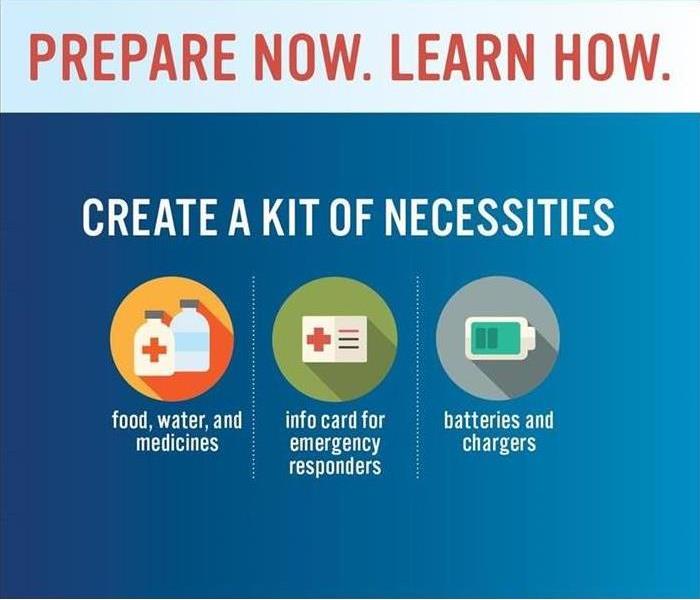 September is here, and its time to be prepared for any natural disaster!
September is here, and its time to be prepared for any natural disaster!
September is National Preparedness Month!
September is here! September is recognized as National Preparedness Month to remind everyone that " We must all take action, now and throughout the year, for the types of emergencies that could affect us where we live, work, and also where we visit:.
With the recent flooding in Harlingen in mind, the last thing you want to worry about is how to communicate, and what to do during a disaster like this horrific event that left many families homes affected with severe water damage, and having to evacuate from their homes.
What you can do:
. Make a Family Plan- You may not be together with your family during a disaster.
Set up emergency alerts from local officials.
Discuss family plans for disasters, and plan where to go for safety
Collect Information on paper including phone numbers, emails, social media , medical facilities, doctors, service providers , and school
Decide on safe, familiar places where your family can go for protection and if you have pets, think about animal-friendly locations.
. Take Action- Ensure you can go for at least 3 Days without electricity, water service, access to supermarket, or other local services
Prepare a disaster supply kit (water, food, battery-powered radio, flashlight, first aid kit, whistle, local maps)
Bookmark weather.gov to stay informed o severe weather
Learn about wireless emergency alerts, messages that will be sent to your phone during an emergency.
Consider the following disasters that can occur at any time: Learn more about hazards which can affect your community and ways you can take action to prepare.
Earthquakes - Can occur suddenly and be deadly. Most earthquake- related casualties result from collapsing walls, flying glass, and falling objects.
Floods - Flooding is the most common natural disaster in the united states and can happen anywhere.
Hurricanes - Have the power to cause widespread devastation, and can affect both coastal, and inland areas.
Tornadoes- Are one of the most violent storms, and can cause death, injury, and destruction within seconds
Wildfires- Can occur anywhere, and can destroy homes, businesses, infrastructure, natural resources, and agriculture.
Why Hesitation Leads To Mold Growth
9/6/2019 (Permalink)
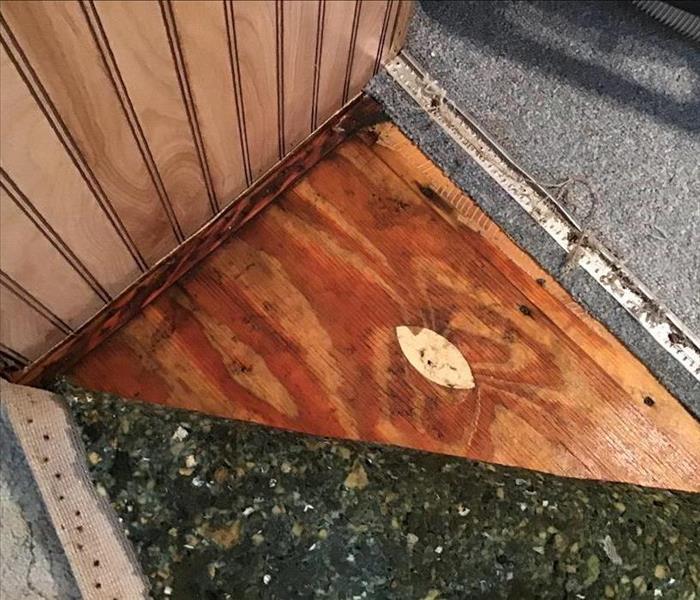 This Home Was The Victim Of Water Damage Due To A Pipe Leak that busted under the kitchen sink.
This Home Was The Victim Of Water Damage Due To A Pipe Leak that busted under the kitchen sink.
SERVPRO of McAllen professionals handle water damages on a daily basis and the most important thing to them is to take action as soon as possible to prevent mold growth.
Mold is likely to spread in an environment that has been subject to moisture for an extended period of time. If your property has sustained recent water damage, it is vital to extract any excess water/moisture and dry out the structure right away.
In an area like ours, down here in the RGV, quick action is especially critical. Since we have a warmer climate, combined with almost 100% humidity pretty frequently, it is crucial that we respond without any hesitation.
Here is a list of things to be on the watch for once you notice that there is moisture present:
- The presence of visible mold,
- Strong musty odors which may indicate mold is present.
- Any evidence of past moisture problems that might have caused undetected mold growth.
- Excessive humidity.
- Stagnant or “stale” air.
Certain conditions may even require the expertise of a qualified Indoor Air Quality/Environmental Professional to inspect the building for mold growth and water damage problems.
Now, after seeing just how much effort goes into mitigation work, it’s clear to see why these are situations that require special professional attention.
If you have an emergency water loss, don't hesitate to call the Professionals at SERVPRO of McAllen
(956)631-0348
24 hour emergency services
Top 3 Things You Should Know About Water Damage
9/4/2019 (Permalink)
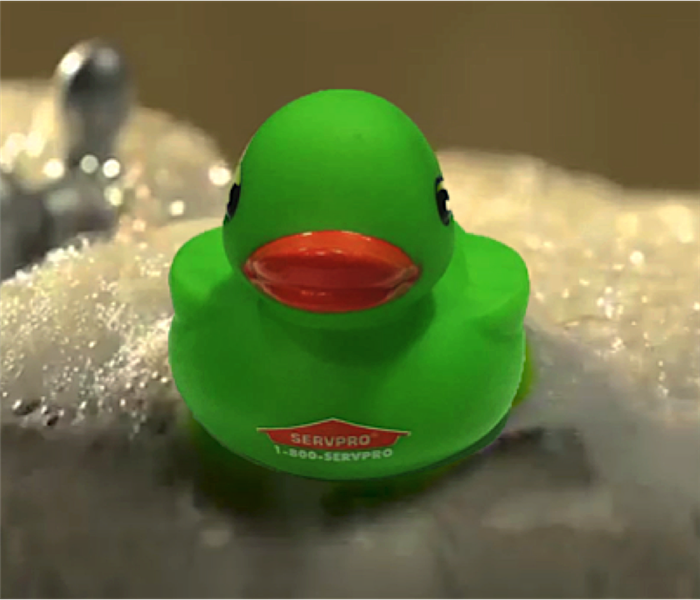 Our Rubber Duck is Always Ready To Tackle Any Water Damage Disaster
Our Rubber Duck is Always Ready To Tackle Any Water Damage Disaster
Water Damage can be a huge hassle if not handled correctly. A surprise flood or leak, whether big or small, can cause major issues with your walls, flooring, and furniture. SERVPRO of McAllen would like to provide you 3 things to keep in mind when facing a water damage situation at home.
1. Don't Wait To Get Help- Its important to get help as quickly as possible once any water has affected your home to prevent any mold to start growing throughout your home. The sooner you get professional help, the better!
2. Start Drying The Area Right Away- The more you can dry the affected area's before help arrives, the better. Mopping up extra water with towels and rags will help the area dry faster. When drying the area, don't use a vacuum to remove water or use other fans or electrical appliances as they can be potentially dangerous if floor was affected with water.
3. The Damage Can Spread Deeper Than The Surface- Even if you clean up all the standing water, it's likely that more water seeped through the floor and base boards. If this extra water underneath your floor is not taken care of, It can quickly become a bigger problem, leading to mold and damage to the structure of your home.
Types of Water Damage, and How to prevent them
7/31/2019 (Permalink)
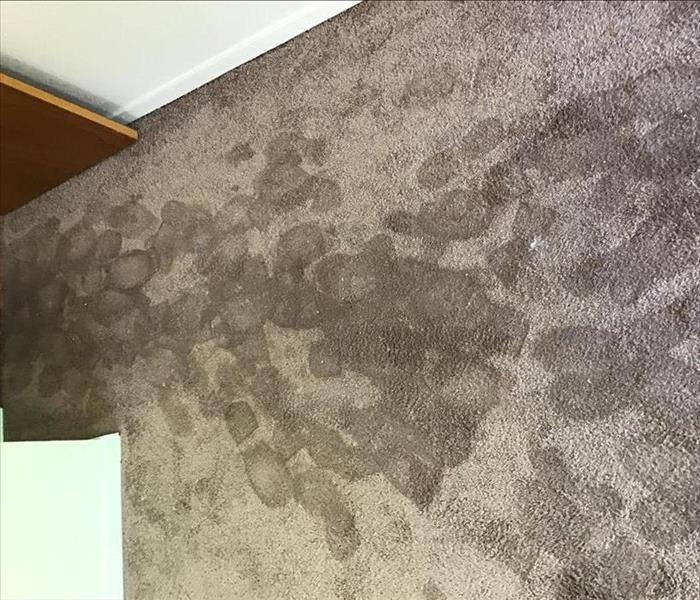 This home owner had a roof leak in her home, which resulted in customers carpet to be affected
This home owner had a roof leak in her home, which resulted in customers carpet to be affected
Water damage describes a large number of possible losses caused by water intruding where it will enable attack of a material or system by destructive processes such as rotting of wood, growth, rusting of steel, de-laminating of materials such as plywood, and many others.
The damage may be imperceptibly slow and minor such as water spots that could eventually mar a surface, or it may be instantaneous and catastrophic such as flooding. However fast it occurs, water damage is a major contributor to loss of property.
An insurance policy may or may not cover the costs associated with water damage and the process of water damage restoration. While a common cause of residential water damage is often the failure of a slump pump, many homeowner’s insurance policies do not cover the associated costs without an addendum which adds to the monthly premium of the policy. Often the verbiage of this addendum is similar to “Sewer and Drain Coverage”.
In the United States, those individuals who are affected by wide scale flooding may have the ability to apply for government and F.E.M.A grants through the Individual Assistance program. On a larger level, businesses, cities, and communities can apply to the F.E.M.A Public Assistance program for funds to assist after a large flood.The program allows the city to purchase the water damaged properties, demolish the structures, and turn the properties into public green space
Residential water damage is one of the most stressful situations for a homeowner. Dealing with it is very devastating and if not addressed on time, may lead to costly home repairs and reconstruction. In the majority of the cases, the people do not even know, and the water damage is damaging their homes from within. Therefore, it is best not to ignore any signs of water damage. The moment one understands that water damage is happening, SERVPRO of McAllen is here to help with your water damage needs.
CATEGORIES OF WATER
Before the cleaning and restoration process begins, it is important to have a clear idea of the category of water damage.
Category 1 – Water
Category 1 Water – Refers to a source of water that does not pose substantial threat to humans and classified as “clean water“. Examples are broken water supply lines, tub or sink overflows or appliance malfunctions that involves water supply lines.
When the cause of water damage is clean water. It is easy to handle, as there are not many microbes to deal with in this situation. If a home is not properly cleaned and dried, it may result in the growth of fungus and mold infestation. Leaky roofs that cause rainwater to seep into the homes is one the causes behind the category one water damage. It is best to inspect the drains on the flat roofs regularly to prevent such water damage. For sloped roofs, the shingles need regular inspection to prevent roof leaks from damaging a house. Other causes of this category damage are bursting of water pipes or any appliance malfunctions.
Category 2 -Water
Refers to a source of water that contains a significant degree of chemical, biological or physical contaminants and causes discomfort or sickness when consumed or even exposed to. Known as “grey water“. This type carries microorganisms and nutrients of micro-organisms. Examples are toilet bowls with urine(no feces), sump pump failures, seepage due to hydrostatic failure and water discharge from dishwashers or washing machines. The gray water contains contaminants and is difficult to deal with as compared to the category one water damage. Exposure to such water may cause discomfort and illnesses. The possible causes of category two water damage include dishwasher discharge, toilet runoff, or washing machine discharge. Water that may contain any hazardous elements is difficult to clean up. When dealing with this type of water damage, it is best to wear gloves to prevent the spreading of any microbes. To prevent category two damage, regular inspection of the dishwasher, washing machines, and toilets is necessary.
Category 3 – Water
Category 3 Water – Known as “black water” and is grossly unsanitary. This water contains unsanitary agents, harmful bacteria and fungi, causing severe discomfort or sickness. Type 3 category are contaminated water sources that affect the indoor environment. This category includes water sources from sewage, seawater, rising water from rivers or streams, ground surface water or standing water. Category 2 Water or Grey Water that is not promptly removed from the structure and or have remained stagnant may be re classified as Category 3 Water. Toilet back flows that originates from beyond the toilet trap is considered black water contamination regardless of visible content or color
Sewage damage and damage due to flood are what causes black water to enter. Black water contains toxic materials, dangerous chemicals, microbes, pesticides, and even bacterial diseases. Only the professionals at SERVPRO can deal with category three water damage as they have the required equipment and personnel. Ensuring the main waste water pipe has a back flow pipe. Inspection of the sewage system of a house after every few months is important to prevent black water damage.
Water damage is a huge concern for homeowners, especially if the cause of it is gray or black water. A homeowner must always hire a professional at SERVPRO of McAllen to deal with all categories of water damage. Even if one decides to deal with the category one water damage themselves, they must completely dry the water off as it may cause fungus and mold growth. If you have any question feel to call our office at (956)631-0348
Let us help with sewage cleaning; Category 3 Water loss
7/30/2019 (Permalink)
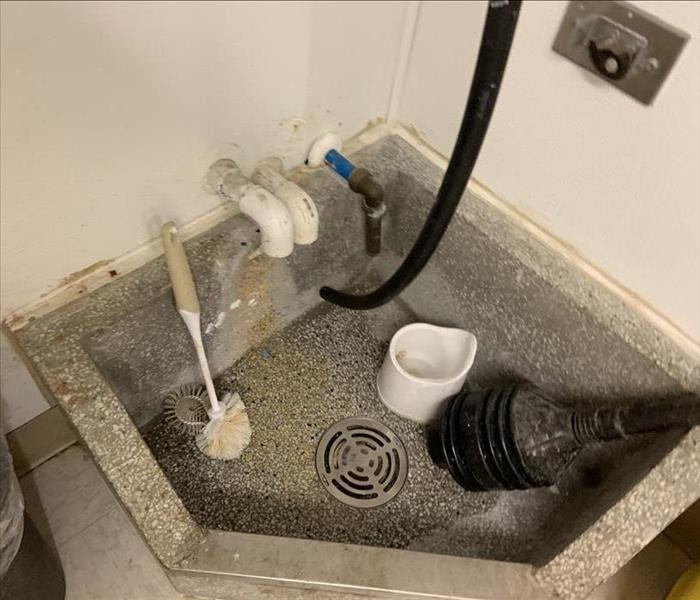 This Backroom of a Local business was affected with sewage damage.
This Backroom of a Local business was affected with sewage damage.
If you have had a toilet leak, a sewage pipe burst, or a mishap with your sewage system that has resulted in a flood in your home, it is important to get it cleaned up right away. But sometimes it can be difficult to know exactly what needs to be done to clean the mess up and get everything sanitized and put back together. Most people do not know the best way to do sewage cleaning, and if not done properly, it can make you and your family sick.
Because sewage water is not clean and is full of bacteria and germs, it is very important that you hire a professional cleaning and restoration company to handle all sewage cleaning in your home. They have been trained to specifically clean up sewage and waste messes and they have all the tools and equipment to get everything cleaned up and back to normal.
Your restoration team will be able to clean and sanitize the entire area where the sewage leak or flood occurred. They will be able to tell exactly what can be saved and what needs to be disposed of. They can treat the area with a special sanitizing solution to make sure that you and your family will not get sick from being exposed to the bacteria in sewage. They can also help get rid of the smell for you so that your home can smell clean and fresh again.
Contact us today at SERVPRO of McAllen if you need sewage cleaning done in your home. Our technicians are expertly trained and can get the job done quickly, effectively, and safely.
Understanding the three flood water classifications
3/25/2019 (Permalink)
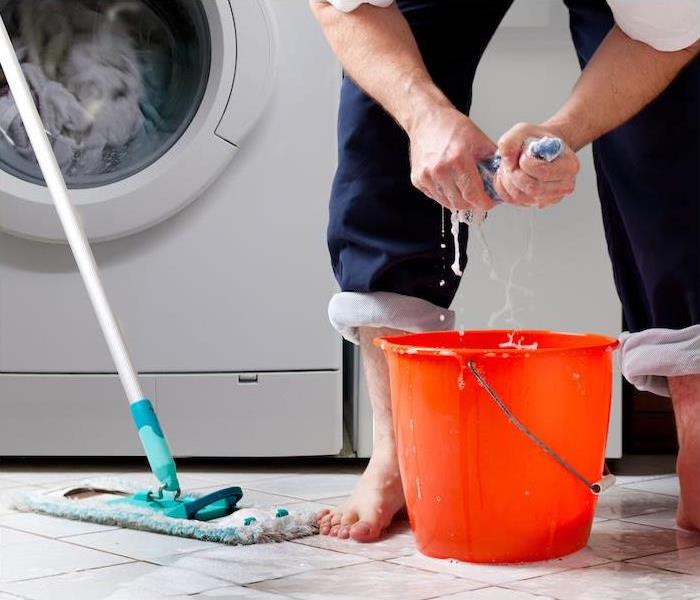 Call us for any of you cleanup and restoration needs!
Call us for any of you cleanup and restoration needs!
All water is not created equal when it comes to Water Damage. There are three different classifications or water: Clean Water, Gray water, and Black Water. When you learn about the differences in these types of water. It will help you better understand how to handle the situation. There will always be a cleanup and restoration process that will follow a water damage situation no matter what type of water has caused damage. It is important, However, to be quick about removing all of the of the moisture and damp items to hamper the growth of mold since moisture is its ideal environment.
Intro to Clean Water
Much like its name states, clean water is considered just that. Clean, and not the type to pose an immediate threat to your health. This water is free of contaminants and can come from:
. Broken water lines.
. Malfunctioning appliances .
. Toilet holding tanks.
. Snow melt and Rain Water.
This type of water damage is the easiest type to work with, since you wont be dealing with many microbes living in the water but remember after 48 hours and following contact with the surfaces of a building, clean water will change to gray water.
Intro to Gray Water
With Gray water damage, cleanup and restoration can become a bit more involved and may pose a health risk as it may contain chemical or biological contamination. The slight contamination in gray water means that the water would have to be thoroughly treated before it is safe for consumption. Gray water is water that comes from dishwashers, Aquariums, showers, etc. Again, the 48 hour exposure rule applies here as well as because gray water will turn into black water if not treated.
Intro to Black Water.
Black water is the most serious and dangerous of the three classifications and is considered highly contaminated by harmful chemicals and biological matter. This type of water includes flood waters containing soil and all sewage waters. Sewage is contaminated with microbes, including bacteria, protozoans, molds, Fungi, and more, Many of which are harmful to humans.
Some of the diseases that can be transmitted by black water are:
. Cholera.
. Typhoid.
. Hepatitis.
. Gastroenteritis- Type Illnesses.
Remember in a flood situation, it must be assumed that the water involved is black water since it picks up contaminants along its path. These three different classifications of flood water are recognized by the institution of inspection, Cleaning and Remediation Certification, an organization that certifies and sets the standards for cleaning and restoration industries to follow. All of our technicians study IICRC standards and best water restoration practices and are available to help determine the steps to take to get your home back to normal.
It doesn't matter what type of water has caused damage to your home or business, SERVPRO of McAllen is here to help get the situation under control, Don't hesitate to reach out to us if you need emergency cleanup and restoration services.
Signs of a Water Leak Behind The Walls
9/4/2018 (Permalink)
There are many potential causes of water damage in your home. Some sources of water damage, such as floods, burst pipes, and sewage backups, are obvious and homeowners notice them right away. However, there are some sources of water damage that are much more difficult to detect such as water leaks behind walls. Homeowners typically do not notice hidden leaks until they have already caused a considerable amount of damage.
Regardless of the source, it is crucial to react to water damage immediately. The damage caused by excess water or moisture will continue to spread and get worse until the source of the water is repaired and the affected materials are dried and restored. Hidden water leaks behind walls can be especially dangerous because the water will get absorbed into flooring, drywall, and ceilings, as well as wooden support beams and sheetrock. If given enough time, a slow leak can result in very serious structural damage that will make the restoration process longer and more expensive. Mold is also a very serious issue that results from extensive water damage.
While water leaks behind walls happen out of view, there are often several signs that can help you detect these water leaks. The following are common signs of water leakage behind your walls.
Musty Odors
The flaking paint and damaged baseboard are signs of a hidden water leak.
Excess water or moisture can create a musty smell when it gets absorbed into building materials like sheetrock, wood or drywall. Wall cavities affected by water damage are vulnerable to mold growth which also has a pungent musty odor. If there is a strong musty smell near a certain area of your wall, there could be a water leak or mold growth behind it.
Mold on Walls and Baseboards
Mold growth normally appears in areas with excess moisture such as bathrooms, kitchens, and basements. If mold appears on your walls, ceilings, or baseboards, it is very likely that there is a source of moisture behind the walls.
Visible Stains
Water from a leak within the walls will get absorbed in the drywall and sheetrock which will cause a noticeable stain. If the stains on your wall continue to get bigger, this is usually a good indication that there is a hidden plumbing leak.
Paint or Wallpaper Peeling
Too much moisture behind the walls can eventually cause paint and wallpaper to start peeling. This normally happens when the sheetrock behind the wall has absorbed too much water. Check for separation in the wallpaper along the seams or flaking paint to help locate a hidden water leak.
Warping Walls
When the sheetrock behind a wall absorbs too much water, it will bend and curve which causes the wall to warp. If there is warping on your walls, this is a clear indication of a water leak.
Stained or Buckled Ceilings and Floors
If the sheetrock has absorbed too much water or moisture, it can affect the connected ceilings and floors. Check your floors and ceilings for signs of stains and buckling and if you notice a problem, check the nearby walls for signs of water damage.
Testing for Hidden Water Leaks
The signs discussed above are normally indicative of a hidden water leak, but it can be difficult to know for sure if you have a hidden leak from these signs alone. If you find some of the signs of a hidden leak in your home and you want to know for sure, follow these tips to test for a hidden water leak by using your water meter.
Turn off all faucets in your home as well as appliances that use water.
Check the water meter and record the usage number.
Leave the water off for approximately 3 hours inside and outside the home.
Look at the water meter again to see the usage numbers.
If the water usage has gone up, then there is a hidden water leak.
What To do When You Find A Water Leak
A water leak behind a wall is an issue that requires immediate attention, and it is usually better left to SERVPRO. Addressing a hidden water leak yourself involves removing the wet drywall or sheetrock and either drying out the affected materials, or replacing them. You also must find and fix the source of the water which may be difficult to do. By contacting SERVPRO of McAllen, you can trust that the job will be done effectively and that the technicians will handle all necessary repairs and mold removal. Make sure to check your home regularly for signs of a hidden water leak so you can react before it causes serious damage.
Will Your Homeowner Insurance Cover Water Damage?
9/4/2018 (Permalink)
Most people learn a great deal about their homeowner’s insurance policy after there’s been an event— which is not the ideal time to have a crash course in coverage. We see quite a few policies and situations. Although the details vary from one state to another and from one policy to another, we can share some general guidelines.
If you live in a flood-prone area— not just near a waterway or the ocean, but in an area that’s frequently hit by major storms— you should get flood insurance. Most insurance policies don’t cover floods, which are the most common natural disaster in the nation. Between 2008 and 2012, the average flood claim was $42,000-plus. Not something you want to pay out of pocket!
Water Damage v. Flood: What’s the Difference?
Water damage, as covered in the homeowner’s policy includes ‘instances of water hitting your home before touching the outside ground’. (No, we’re not making this up.) Damage from a leaky roof or broken pipe are insured. So too is mold that results from those accidents. But mold resulting from a flood won’t be covered unless you have separate flood insurance.
It’s important to note that it is the damage to your home that’s insured, not the actual item that failed. So if a busted pipe was the source of the problem, the ruined carpet will be covered but not the broken pipe.
FEMA estimates that just six inches of water can cause $20,000 in damage.
After the hurricanes of the past decade, the government started tracking storm damage. This website not only shows you scary videos of hurricane damage and houses surrounded by water, but offers assistance in finding low-cost policies. Check it out: https://www.floodsmart.gov/floodsmart/.
Here are some things flood insurance generally does cover:
some things flood insurance generally covers
Building & foundation
Electrical & plumbing
Permanently installed carpet, paneling & furniture
Removal of debris
Built-in appliances
Homeowners do have some protection. And remember, you are not required to accept the lowest bid on restoration work. Repair rates should reflect the prevailing charges in your area for quality work. It’s easy enough to find a fully licensed and insured firm to take charge of the clean-up work. Just call us!
While the first day or so after a catastrophic flood may seem like Armageddon, make sure you take the necessary steps to prevent further damage. We can help you identify what needs to be done. Also ask about time requirements. Most policies stipulate that preventive measures and restoration work be done within a certain time frame.
Water Damage Starts Working Immediately to Destroy Your Home
9/4/2018 (Permalink)
What’s the first thing that comes to mind when you arrive home and are shocked to find a flood? If you imagine yourself calling your mother, your insurance agent and maybe the neighbor to find out whether she has damage, we’d like to re-align your priorities.
Water damage grows exponentially worse, the longer you wait to call SERVPRO of McAllen.
Within a matter of hours, the damage spreads its muggy little tentacles.
mold & mildew get a foothold in your carpets, furnishings and inside the wallwater damage mold removal
standing water breeds microorganisms that cause rot
odor grows more noxious and permanent
drywall is soaked, warped and rendered useless
wood swells and becomes malformed
metal tarnishes and rusts.
At this point, insurance claims start to rise astronomically and the chances of recouping full value drop dramatically. And that’s just the beginning of this horror story. Water damage is real!, within a day or two, fungi appears, showing up as green or black mold or some especially creative-shaped mushrooms. Adhesives lose their grip on your ceramic tile. Wallpaper peels. Wooden door casings swell up. Floors buckle. Fabrics are stained beyond preservation. Papers must be discarded. Paint peels. Electronic components fail. The occupants are at risk from air-borne and water-borne contaminants.
Heard enough?
Priority Call to SERVPRO
We have seen this timeline unfold time and time again and have made a profession out of mediating water damages to homes. That’s why we feel a sense of urgency when a homeowner calls to report a water-damaged home or business. For most people, this is their first go-round with the horror. They are confused and don’t know where to turn. Should you call your brother in Dallas and ask if he’s ever seen such a mess? Call your friend who owns a Construction company ?
We are perfectly sincere when we say, No! SERVPRO should be your first call.
Even if the water entering your home was clean (from a broken water intake pipe, for instance), it quickly turns into a cesspool. Stagnant water is a prime breeding site for organisms that cause disease and damage. Water-soaked materials, even after they start to dry, provide a fine environment for growing a good crop of mold and fungi.
If your first call is to SERVPRO of McAllen , we can arrest the growth of mold before it becomes a serious situation, detracting from your home’s safety, comfort and value.
It’s crtical to attack the situation ASAP. Homeowners sometimes try to dry the affected areas themselves and learn afterward that it’s more complicated than just wiping up the kitchen floor after a spill. Mold spores are all around us. It takes a good soaking to revive them. And then they get the upper hand.
SERVPRO are experienced mold clean-up, restoration and mold removal experts. You don’t need to call a contractor or your brother-in-law in California. One call to SERVPRO is enough to launch a professional clean-up job.
What To Do If Your House Floods.
7/30/2018 (Permalink)
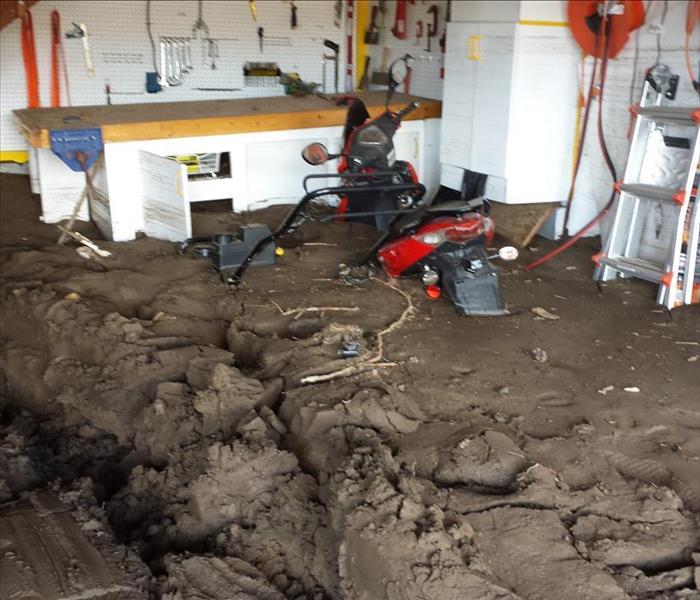 The most pervasive natural catastrophe on US soil is flooding.
The most pervasive natural catastrophe on US soil is flooding.
Torrential thunderstorms, overflowing riverbanks, and Category 2 hurricanes all possess the incredible power to unleash massive amounts of floodwaters into homes. Natural disasters are not the only cause of house floods. Burst plumbing pipes, faulty appliances, and foundation leaks are also responsible for devastating home flooding.
When your house floods, here’s what to do:
1.-Re-enter with caution
2.-Document the damage
3.-Contact your insurance company
4.-Evaluate affected items
5.-Pump out floodwaters
6.-Manage mold
3.-Protect the property
7.-Be alert to fraud.
1.-Re-Enter With Caution
Take extra precautions when stepping foot inside your home after floodwaters subside. The surge of floodwater can cause holes in the floors, warped walls and a cracked foundation. Visually inspect the home prior to entering.
Be alert to lingering odors of gas. The home’s electricity should also be shut off before you step inside. Water and electricity are a lethal combination. As a safety measure, enlist the services of a licensed electrician to inspect the home before walking in.
- Document The Damage
As a homeowner, you’re likely to be motivated to start repairs as quickly as possible. Hold off on the impulse and instead take ample photographs and digital videos of the damage caused by the flood. Your homeowner’s insurance company requires proof of the flood damage in order to provide proper reimbursement. Insurance coverage could decrease if you start repairs before documenting the loss.
- Contact Your Insurance Company
Flood insurance has a major impact on whether homeowners recover or become financially ruined. Homeowner’s insurance rarely covers flood damage. Rather, as homeowners with properties located in flood zones know, flood insurance must be purchased separately through the National Flood Insurance Program. Call your insurance representative immediately after the flood. Work with your insurance adjuster to pinpoint the cause of the flood and any degree of coverage.
- Evaluate Affected Items
Floodwaters are polluted with waterborne bacteria, sewage, and harmful pathogens—all of which can cause disease. As a result, food, medicine, and cosmetics that have come into contact or have even been in close proximity with floodwaters should be discarded.
Mattresses that have been soaked by floodwaters should also be tossed out. Floodwaters can contaminate toys and stuffed animals, which also should be thrown away.
- Pump Out Floodwaters
Once your insurance representative has approved the cleanup, you can use a sump pump to gradually remove the water. A wet vacuum and even buckets will also help remove excess water. Water is heavy, so use extra caution when lifting water.
Slowly remove the water in stages. Removing the floodwaters in haste is likely to cause the walls or floors to collapse. Wooden floors, too, should be dried gradually to prevent the wood from cracking or splitting.
SERVPRO of McAllen will be able to help with this process and finish the job properly.
- Manage Mold
Mold flourishes on moisture rich surfaces within 24 to 48 hours. Spores can latch onto wet carpeting, bedding, rugs, and upholstered furniture. Mold colonies can be controlled with a disinfecting solution applied to the surfaces. Ammonia and bleach should never be mixed, as the solution will produce lethal fumes.
- Protect The Property
Floodwaters can shatter glass and damage the building’s structures. Homeowners should make every effort to prevent further damage to the home. Board up broken windows and doors to stop the elements, like rain, snow and wind, from causing more ruin. The process will also deter wild animals, snakes and even criminal intruders from entering your home.
- Be Alert To Fraud
Fraudulent calls from imposters threaten flood victims with voided insurance policies if additional payments are not made. FEMA’s Director of the National Flood Insurance Program, Roy E. Wright, confirms that these calls are fraudulent and should not be given any consideration.
Those recouping from a flood are advised to only accept calls from FEMA representatives, local officials, insurance companies and the adjusters assigned to your property.
Emergency Water Damage Restoration
When floodwaters permeate your home, you may seek professional help to return your property to its pre-damaged condition. SERVPRO of McAllen is a local water damage restoration company with the experience, equipment and dedication to restore your home when floodwaters strike. Our team stands by 24 hours a day, 7 days a week to respond to emergency calls.
How To Prevent Water Damage From Appliances And Plumbing Fixtures
7/30/2018 (Permalink)
Many cases of water damage in homes and buildings are caused by inclement weather such as rain, floods, and even humidity. When wet weather conditions are imminent, homeowners will take actions to prevent seepage and indoor flooding. While it is important to protect your home from rain and flooding, you cannot forget about the other common causes of water damage that can happen at any time. The plumbing system is one potential source of water damage as fixtures like sinks and toilets may overflow or leak. The pipes may spring a leak as well or burst due to ice or general wear and tear. There are also several large appliances that could leak and cause water damage including water heaters, washing machines, and dishwashers.
Fortunately, it is easier to prevent water damage from plumbing fixtures and appliances than from severe weather or flooding. If you check your plumbing fixtures, pipes, and appliances regularly for signs of damage or leaks, you can prevent widespread water damage that will result in expensive restoration services. The following tips will help you prevent this type of water damage.
Plumbing Fixtures
A lot of water passes through your shower, bathtub, sinks, and toilets on a daily basis. If any of these fixtures are leaking or damaged, you could end up with major water damage in your home. You must inspect the plumbing fixtures in your home regularly so you can find damage or signs of leaks before they lead to widespread water damage or structural issues. Turn on each faucet in your home, including your sinks and bathtub, and look for leaks coming from the faucet or handles. You should check under all sinks as well to make sure there is no water leaking from the bottom. When you check the toilet, look for water leakage around the base and connecting pipes when you flush. If you notice any leaks or damage to your fixtures, call a plumber to help fix or replace them.
Pipes
There are pipes all throughout your home, some of which are in hidden or inaccessible areas. If a pipe bursts or starts leaking, it can cause hundreds of gallons of water to spill into your home within a day. It is very important to check your pipes for damage, loose connections, and wear and tear that could lead to a burst. During the winter, it is also important to check for frozen pipes because frozen water within the pipes will expand and cause a burst. Make sure you check the pipes around the appliances and plumbing fixtures as well. If you notice swelling or discoloration of your walls, this could mean that a pipe behind the wall is leaking.
Appliances
Just like with your plumbing fixtures, you should be checking your appliances regularly for leaks. Refrigerators, dishwashers, washing machines, and water heaters are vulnerable to major leaks that can cause damage to the surrounding area. When you check your washing machine and dishwasher, make sure you inspect the hoses. It is a good idea to replace these hoses every 3 years to avoid damage from wear and tear. The high-pressure metal-mesh hoses are the best option for replacements because they are extremely durable.
Water Shut Off Valve
All homeowners should know where the emergency water shut off valve is and how to use it to shut off the water. If one of your appliances or plumbing fixtures suddenly breaks and causes a major leak, shutting off the water is your best option to prevent major damage. It is also a good idea to shut off the water in your home if you will be away for a week or longer.
While your plumbing fixtures, pipes, and appliances can cause very serious water damage in your home, you can prevent it from happening with routine checks. If you notice damage to your fixtures or appliances, repair the damage if you can, or call a plumber for assistance. You can take some preventative measures yourself such as replacing broken parts or caulking your bathtub. If you have sustained water damage in your home because of a leaking fixture or appliance, call SERVPRO of McAllen.
The Different Categories of Water
3/7/2018 (Permalink)
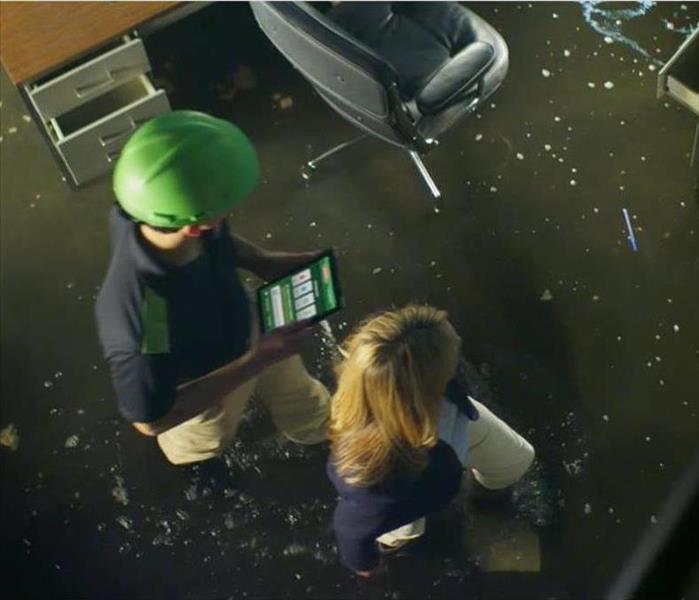 SERVPRO 24/7. "Like it never even happened." CALL NOW!
SERVPRO 24/7. "Like it never even happened." CALL NOW!
What is the Category of Water?
According to IICRC Standard and Reference Guide for Professional Water Damage Restoration (IICRC S500), there are three categories of water that cause damage in buildings. They are summarized as follows:
Category 1 Water (Clean Water)
Water that originated directly from a sanitary source and when exposed to it, either through the skin, inhaled or ingested, does not cause a great deal of harm to humans. Examples of Category 1 Water: broken water supply lines, melting ice or snow, falling rain water, and tub or sink overflows (no contaminates). Category 1 water may become progressively contaminated as it mixes with soils on or within floor coverings or building assemblies (walls, decking, subflooring). Time and temperature, which promote the growth and amplification of microorganisms in water can cause Category 1 water to degrade
Category 2 Water (Gray Water)
Defined as water with bacteria present, but no solid waste, carrying microorganisms and nutrients for microorganisms. Category 2 water does have the potential to cause discomfort or sickness if consumed or exposed to humans. Examples of Category 2 water: discharge from dishwashers or washing machines, toilet bowl overflows (urine, no feces), seepage due to hydrostatic pressure, and sump pump failures.
Category 3 Water (Black Water)
Contains pathogenic agents and is grossly unsanitary which includes raw sewage and other contaminated water sources, such as flooding from sea water, ground surface water and rising water from rivers or streams. Category 3 water is highly contaminated and could cause death or serious illness if consumed by humans.
It is important to understand that when you experience water damage, the longer you wait to begin dealing with the concern, the worse it can get. You should not allow the water to sit because the risk of bio-hazard increases. In short, in 2 to 3 days, category 1 water can turn into category 2 water and eventually category 3 water as other bacteria and pathogens begin to proliferate.
Dealing with the Damage
You must act immediately. Your first step is to call SERVPRO of McAllen to assess the class of water and level of destruction. In the meantime, you should begin all possible mitigation efforts.
According to the IICRC:
Whether insured or not, it is important for property owners to document damage with photographs or video, and immediately begin loss mitigation procedures themselves; or hire a qualified contractor to do this on their behalf. It is totally inappropriate to put off mitigation while waiting for an insurance claims representative to arrive on the scene to evaluate the loss. By that time, in all probability sufficient time will have passed to grow and amplify microorganisms, which may not be covered by insurance. Loss mitigation is defined by insurance policies as “reasonable and prudent measures designed to preserve, protect and secure property from further damage,” including microbial growth and amplification.
Prevent freezing attic pipes
10/30/2017 (Permalink)
How’s this sound? Its winter, you live in the cozy confines of your suburban home in the heart of the South. You’re sound asleep at night, dreaming of a piece of cake and some hot cocoa. Then all of sudden in your dream you hear the faint sound of rain drops. Then you start to feel them on your face. Then you wake up and think ‘gosh, that was weird!’ You shake your head, rub your eyes and decide you might as well use the restroom while you’re up. Then you put your feet on the floor and feel water and hear a splash. Then all of sudden, you really wake up…sure enough, it’s raining inside your home! What in the world is going on? Well, tens of thousands of dollars in water damage, that’s what!
The above nightmare can happened in winter. You can ended up with extended damages and had to move out of house in the middle of winter. Does that sound like something you would like to avoid? If so, please read on…
Do you have plumbing pipes in your attic?
In states that see cold winters, you never see plumbing pipes in attics, and for good reason. But in the South, it’s not uncommon for homes that are built on a slab foundation to have plumbing systems and pipes in the attics. It’s a logical place to house these key elements of the home, but the gamble is they’ll be safe there. And for the most part, there is never an issue. That is, until that freak cold system blows through and causes extremely low temperatures.
Have you ever been up to your attic? If not, peek your head up there and see what you find. If you notice plumbing pipes that are fully exposed to the elements, understand that you are playing a game of water damage Russian Roulette and eventually you will lose.
Insulate any attic pipes that transfer water!
If you look up in your attic and find exposed pipes, you really need to take immediate action. Luckily the cold weather hasn’t hit yet, so you’ve got some time to protect your home against flooding. Here is what you need to do:
Go to your local home improvement store and buy some pipe insulation material. It’s not very expensive and it’s extremely easy to place over your pipes. You just need to make sure that you don’t leave any area exposed, including joints where sections of pipe connect. So before you go to the store, you need to go up into your attic and take inventory.
How many linear feet of piping do you need to insulate? How many T-joints are there? Any rounded joints? Add up everything and make sure you’ve got a complete list of everything you need. If you’re anything like me, you’ll end up taking 5 or 6 trips to the store for what should have been a fairly easy home improvement project; In one Saturday’s worth of work, you can end up saving yourself thousands of dollars. Because the reality is if you end up with a burst pipe in your attic due to freezing, the amount of water damage is going to be extensive. Within minutes, water will travel throughout your attic, down your wall cavities and through your ceiling. It can potentially flood every floor of your home within a few minutes.
Have you suffered water damage from a frozen attic pipe?
If you find yourself dealing with the nightmare situation highlighted at the top, please stay calm. Right now the best thing you can do is call for experience, competent help that can begin the water extraction process immediately. At SERVPRO of McAllen , our specialty is dealing with emergencies like yours. We have literally seen it all. So if you have home flooding from a frozen pipe in your attic, please give us a call immediately.
10 Most Likely Places to Find Water Leaks
10/9/2017 (Permalink)
Finding water damage can be one of the most annoying problems to find for property owners; it’s one more task to add to the never ending to-do list and it can be costly to fix, depending on where it has spread. But it is highly recommended by water damage restoration professionals to have it restored as soon as possible to prevent the problem from becoming worse over time. Mold can also develop from any untreated areas containing high amounts of moisture.
Common Places To Find Water Leaks:
Hot water heaters. About 70% of all water heater failures have been caused by a water leak or sudden burst. This can occur after 10 – 15 years of having the water heater, depending on the quality and size of the tank. To check if this is the source of the water leak, remove the drain pipe and listen for a hissing sound. You may also notice a puddle underneath the tank.
Toilets clog all of the time and can become messy if they overflow. But they can also seep water around the seal in the floor. If you find a small puddle around the toilet, turn the water off and inspect the tank. Depending on the severity of the damage, you may have to call a plumber.
Water Pipes . Especially in the winter time, pipe bursts are extremely common as the water expands and adds more pressure to stressed pipes. Be sure to inspect each one thoroughly for any drips or small holes.
Refrigerator and Freezer . Because it is constantly pouring water, ice maker leaks are very common. To see if there is a leak, unplug the appliance and inspect the back of the freezer or freezer to find any water damage on the wall. There could also be a small hole or two in the pipes if they are plastic. If you see any dripping, consider replacing the tubes with copper pipes.
Air Conditioner . While moisture around this appliance is common and won’t hurt anything as long as there is not any moisture on the drywall, excessive dripping can cause significant damage. To see if there is a problem, check the condensate pump, refrigerant, and drain line for any leaks.
Washing Machine . During each cycle, there are about 15 to 30 gallons of water running through the washing machine. Any small hole within the appliance, drain, or tubes can result in major water damage.
Gutters . Not all water damage sources are located within the home. Any gutters containing significant amounts of leaves, dirt, and other debris can cause water to flow over the side and seep into the foundation; this is a very common source of basement flooding.
Showers and Sinks . Next to washing machines, sinks and showers are among the most common sources of water damage. Any holes in the water supply lines or worn-out caulking can spring major damage at any time.
Sump Pump . Especially after a big storm, sump pumps can fail and create the risk for basement flooding, if it hasn’t happened already. After repairing the pump, it would be best to schedule annual maintenance and inspect its condition to prevent future failures.
Air Ducts . Because they are connected to the air conditioning unit, it is common for moisture to accumulate within the ductwork and spring a leak. If you notice any condensation on the air registers or ducts themselves, you may find a leak in another area. Professional air duct cleaning can also prevent this problem in the future.
Restoring Water Damage From Leaks
While you will need a plumber to fix any pipes or leaks, fixing the water damage is crucial to prevent additional destruction. Once an area has been affected, the water will spread and damage additional areas. But as soon as the source has been removed, don’t hesitate to call SERVPRO of McAllen to do the mitigation process.
Steps To Take If Your Water Heater Breaks
4/4/2017 (Permalink)
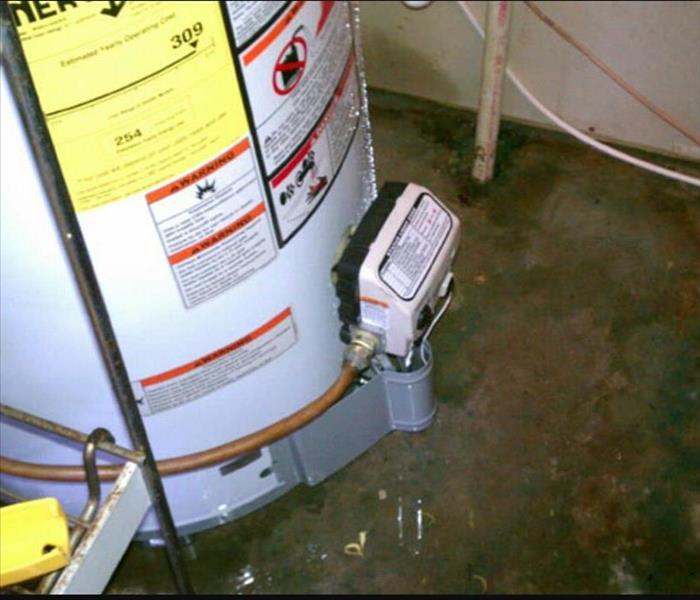 Busted Water Heater
Busted Water Heater
A broken water heater is a nasty surprise, especially if you’re in the middle of a shower. If yours starts making unusual noises or stops working completely, take these steps immediately to minimize the impact on your home.
Turn off the power supply.- For a gas water heater, look for a dial on the top of the thermostat. For an electric water heater, turn the circuit breaker off water heater
Turn off the water supply.- Turn the water valve clockwise (“righty tight”) until it stops. It’s very important to turn off the supply of water to the heater. If you can’t turn the valve to the heater, you’ll have to turn off the water supply to the house.
Drain the water heater.- Find the drain valve at the bottom of the water tank and attach a hose to it. Run the other end of the hose to a lower area where dirty water can safely drain, such as a basement drain. Open the drain valve, using a screwdriver if necessary.
Open the pressure relief valve.- Flip the valve on to keep a vacuum from forming while the water is draining. Caution – the water may be very hot.
Rinse the water heater with cold water.- Once the water heater has been completely drained, rinse it with cold water to flush out any remaining sediments.
If your water heater breaks and leaks water everywhere in your home or business in McAllen, TX and surrounding area, call the experts at SERVPRO of McAllen. Their certified, licensed, and insured professionals are specially trained in water damage restoration. Using non-invasive moisture detection probes and sensors, they will determine the extent of the damage, and then develop a comprehensive water damage restoration plan. From water extraction and drying to repairing drywall and cabinets, they can return your home or business to its preloss condition.
The costs to repair a water heater vary, depending on location and market competition. It is estimated the national average is $509.00.
How to replace subfloor after water damage
3/28/2017 (Permalink)
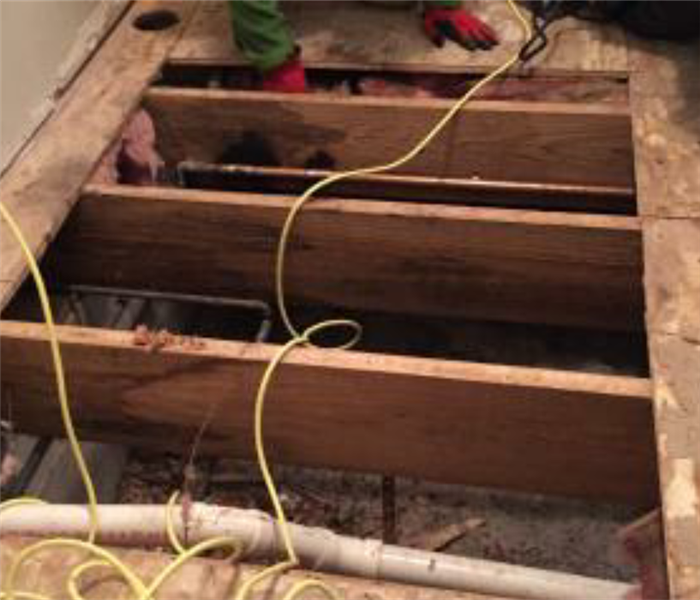 Removing damaged subfloor.
Removing damaged subfloor.
How to Replace a Water-Damaged Subfloor
Subfloor is commonly misunderstood. There are different variations. The subfloor for residential homes is typically 5/8- or 3/4-inch-thick plywood or oriented strandboard. The subfloor is nailed directly to floor joists. In some cases a thinner material -- overlay -- is nailed to the subfloor to level subsequent floor coverings. Common problems with water damage to subfloors include leaky fixtures such as toilets, sinks, water heaters and washing machines. When subflooring is exposed to excessive moisture it delaminates, swells or rots, compromising floor integrity and damaging coverings. If your subfloor has an overlay, you must replace it along with water-damaged subfloor.
Things You'll Need:
Screwdriver Circular saw Jigsaw(optional) Straightedge Prybar Clawhammer Diagonal pliers Two-by-four studs Mitersaw Drill or power screwdriver 3 inch screws Plywood or oriented strandboard Overlay(optional) 2-inch screws 1½inch screws Reciprocating saw (optional)
Remove a floor vent using a screwdriver. Look inside and examine the cross-section of your existing flooring to determine the thickness and type of subflooring material. Set the blade of a circular saw to the thickness. If it has overlay, include that in the measurement. If you don't have a vent, set the blade to cut 1 inch deep.
Draw a rectangular or square pattern using a straightedge at least 6 inches bigger than the damaged area. Subfloor must be supported by joists. If the cutout is not supported, extend the pattern to the nearest joint or seam.
Cut through the subfloor, or the subfloor and overlay if applicable, following the drawn template using the circular saw. If it's an area bigger than about 36 inches square, cut the pattern in half. If the drawing has a curve, use a jigsaw to cut along the curve.
Tap the tip of a pry bar into any crack or seam using a hammer. Pry up the sections slightly to loosen nails. Remove any exposed or raised nails with a claw hammer. If nails break off, hammer them down or use diagonal pliers to remove them. Continue to pry, lift and remove the section or sections, pulling up stubborn nails with the sections.
Measure unsupported sides of the cut out area. Add blocking by cutting two-by-four studs to the measurements using a miter saw. Screw the studs flush to the sides of the joists to provide support for the subfloor using a drill or driver and 3-inch screws.
Measure the cutout area and subtract 1/8 inch from all four sides to allow a 1/8-inch gap between the existing subfloor and the new subfloor. Cut new subfloor and subsequent overlay if applicable, using a straightedge and a circular saw. Use the same type of material, and the same thickness, as that you removed. If it's a curved piece, cut it to fit with the jigsaw. Place the new subfloor in the cutout area.
Screw the subfloor to the joists and blocking using a drill or driver and 2-inch screws. Screw the overlay, if needed, to the subfloor using 1½-inch deck screws.
Draw out 24-to-36-inch sections to replace subfloor in a complete room. Cut through the sections using the circular saw. Cut along the wall where the circular saw will not work using a reciprocating saw. Remove the sections using the pry bar.
Place the new subfloor on the joists, centering the edges and joints over the joists, splitting the difference so that two pieces are supported by a single joist if necessary. Add blocking if needed. Screw the subfloor to the joists using a drill/driver and 2-inch screws. Screw the overlay to the subfloor using 1 1/2-inch deck screws if applicable.
Tips & Warnings
Park a refuse container outside the door. Throw in the pieces as you remove them.
Wear gloves and eye protection when working. Watch out for exposed or broken nails.






 24/7 Emergency Service
24/7 Emergency Service
